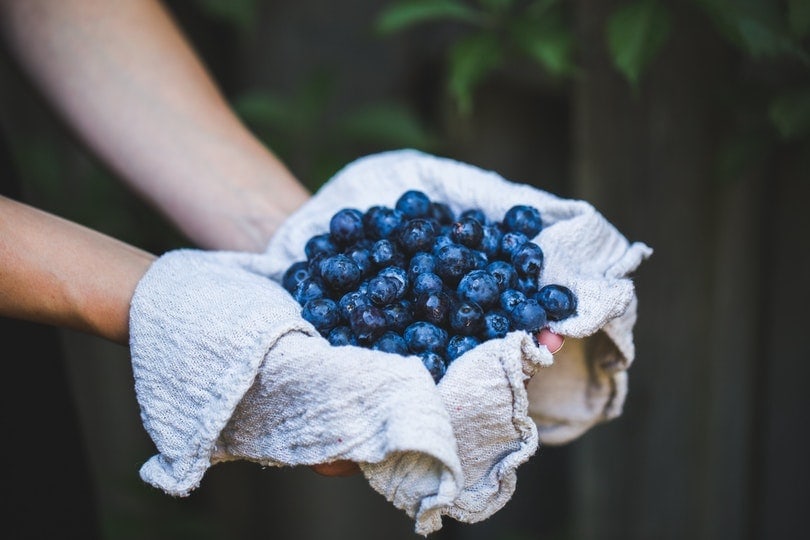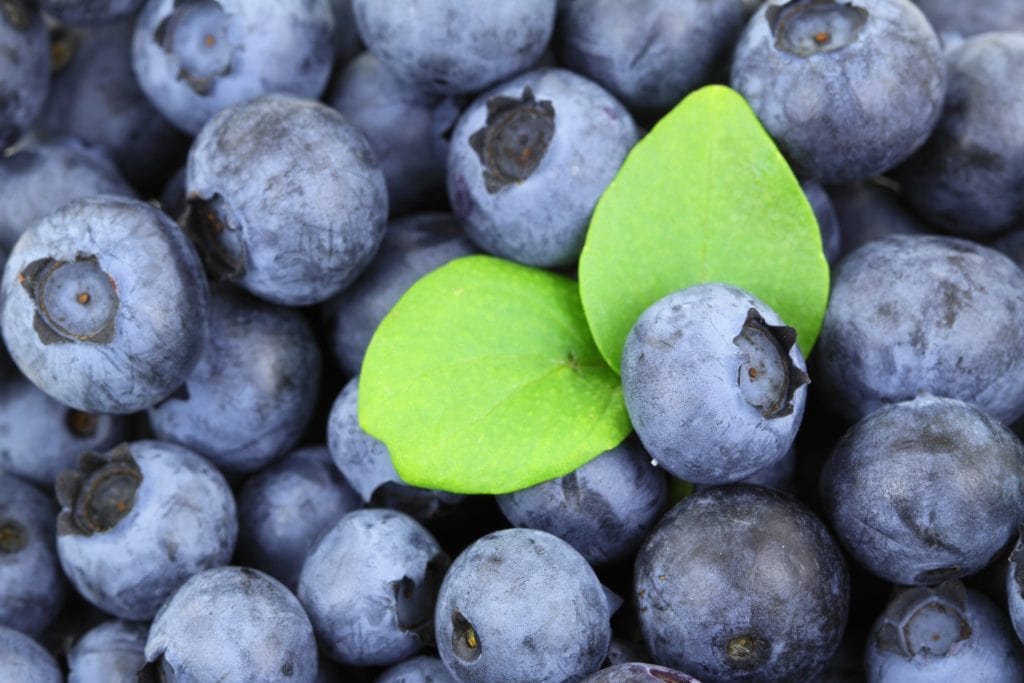How & When to Plant Blueberries: 7 Easy Steps
-

- Last updated:

Planting blueberry bushes is a fulfilling way to bring beauty to the garden and antioxidant-rich treats to the table. Different climates will affect which cultivars are practical to grow, and they can impact the best time to plant your blueberries. And given the unique growing habits of blueberry plants, it takes careful planning and preparation to set yourself up for bountiful harvests.
To help you get started on growing your favorite varieties of blueberries in your backyard, we’ll detail how and when to plant blueberries for the best possible results.

The 7 Easy Steps for Planting Blueberries
1. Starting Plants

There are countless blueberry cultivars available, many specially-bred for growing in certain areas. Look for popular blueberry plants that thrive in your USDA hardiness zone. For example, Rabbiteye or Southern highbush varieties like Legacy and Ozarkblue produce well in warm weather, while half-high plants like Pink Popcorn and St. Cloud grow best in cooler regions.
You can buy dormant and bare-root blueberry plants online or bring home potted plants from a local nursery. Online nurseries will often supply plants around the planting season in early spring.
When buying blueberry plants locally, look for plants 1–3 years old because that is around the time when they will start producing fruit. Keep your plants watered and sit them in a sunny spot until you can plant them. Whether you buy your blueberry plants online or locally, try to plant them within a day or two of receiving them.
Choose two or more blueberry varieties for planting. Even though many kinds of blueberry plants are self-pollinating, you will improve cross-pollination and enjoy more substantial harvests when you grow a diverse array of early, mid, and late-season cultivars. It will also give you an extended fruit-bearing season. Plant blueberry varieties with the same fruiting period near each other, so bees will be more likely to transfer pollen between them.
2. Selecting a Spot
Blueberries need full sun and well-drained, acidic soil. Look for a spot that receives at least 6 hours of sunlight daily. Plants can handle some shade, but you want to keep them away from trees, as they’ll compete for moisture and block air movement around the blueberry plants.
3. Soil Requirements
Blueberry bushes need acidic soil to grow, favoring a pH between 4.0 and 5.5. Growing blueberries in many areas will require you to amend the soil to lower the pH, so you must test your soil before planting.
Sulfur, an organic acidifier, is an effective amendment that you can measure out to accurately reach the desired pH without a ton of trial and error. Sulfur amendments should go at least a foot into the ground. It takes several months for sulfur to adjust the pH, so you will want to pick the spot and amend the soil in the fall before planting to give it enough time.
The soil also needs to be well-aerated and well-drained, with a rich organic matter content of over 3%. Mixing a planting soil of two parts loam and one part wet peat moss for the hole will help aerate the soil and introduce vital organic material to spur growth. If the sun exposure is excellent yet the soil properties are way off and incapable of growing plants, you can also consider using containers and raised beds.
4. Spacing Plants

Plant spacing will vary depending on the variety, but you generally want them spaced at least 3–5 feet apart in a row. Highbush cultivars need more space to grow, around 6–8 feet. Keeping the bushes close will allow bees and wind to pollinate them more effectively. Rows should have at least 8–10 feet of space between them.
5. How to Plant Blueberry Plants
To plant a blueberry bush, dig a hole about twice as deep and wide as the roots. If you’re taking the plant from a container, make the hole about twice the size of the pot. It should be around 18” wide and 20” deep.
Mix the dug-up soil and organic matter (e.g., wet peat moss, sawdust) in a 2:1 ratio for proper drainage and moisture retention. Place the plant’s root ball in the hole just below the ground, letting the roots spread out.
Backfill the hole with the soil mixture and any extra soil you may need, and gently pack the soil in place. Try to create a slight mound to help with drainage. The uppermost roots should sit 3–4 inches below the soil’s surface. Water the plant deeply immediately after you place it.
6. Mulch and Fertilizer

Add 2–4 inches of mulch in a 3–5 foot spread over your blueberry bush’s roots. Use an organic mulch such as peat moss, wood chips, sawdust, grass clippings, or pine needles. These will help improve the soil and maintain its low pH, protect against weeds, and keep the shallow root system moist.
A month after planting, fertilize the plant with a balanced organic fertilizer. Since blueberry plants are related to azaleas and rhododendrons, you can use the same kind of fertilizer. You’ll generally want to fertilize them twice a year, once in early spring and once in late spring. Apply it in a ring about 6–12 inches away from the plant’s crown, following the product instructions for proper dosing.
7. When to Plant Blueberry Bushes
Blueberries are hardy within zones 3–9. In the warmest zones, you can plant blueberries in spring or autumn. In zones 3–5, you should wait to plant until early to mid-spring, after the last frost. Late April to early May is often ideal.

Final Thoughts
Blueberry bushes are a delightful addition to any garden, but their particular growing demands can make them tricky to plant. The hardiness zone in which you live will play a crucial role in determining your planting opportunities, and it will take careful forethought to prepare the perfect growing spot. But by following the tips laid out here and talking with the experts at your local nursery, you’ll be enjoying fresh homemade blueberry pies, jams, smoothies, and more in no time!
Featured Image Credit: Burst, Pexels
Contents
